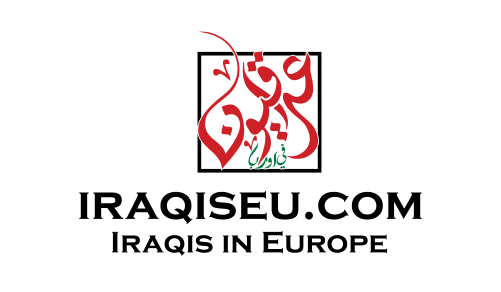Last Friday, 18 people were injured in a knife attack at Hamburg’s main train station. Fifteen of them were stabbed, and three sustained other injuries. The German news agency dpa reported that four suffered life-threatening injuries, but were now all in stable condition.
The suspect is a 39-year-old woman who Hamburg authorities believe had been “experiencing a psychological emergency.”
The attack was followed by a major operation at Hamburg station, involving police, the fire service and emergency medical responders.
Police later commended the “rapid intervention” of two passersby who managed to stop the woman, take the knife from her,and pin her down until authorities arrived to arrest her, as local media later reported.
One of those passersby is Muhammad al-Muhammad, a Syrian teenager who came to Germany in 2022. As more and more outlets have reported on his courage to intervene, he has become the center of a national conversation about immigration dominated by right-wing media narratives.
The German weekly news magazine Der Spiegel recently published an article on al-Muhammad. The lead image they showed of him for their report was provided by al-Muhammad himself. It has since been manipulated and repurposed to peddle false information online.
‘Posts like these echo right-wing sentiments’
The original image shows al-Muhammad standing in Berlin in front of the Brandenburg Gate. Online users have copied his likeness onto backgrounds showing Washington DC or Moscow.
These posts are accompanied by sarcastic remarks like “the peace talks [between Russia and Ukraine] can now begin, thanks to Muhammad al-Muhammad,” implying that media reports on him have so far been given an overly positive spin.
Una Titz is a media expert at the Amadeu Antonio Foundation, which combats right-wing extremism and racism.
“The fact that a Syrian person is the savior [in this story] doesn’t fit the worldview in which refugees, and especially Syrian refugees, are equated with violent assailants and knife attacks,” she told DW. “The goal of posts like this is to echo right-wing, populist sentiments.”
The German tabloid Bild also released an image of Muhammad al-Muhammad which was later manipulated and circulated to spread false information.
But these posts have not only served to express scorn or disbelief over his courageous act, they have also made people unsure about the truth of the facts presented.
‘How did you do it?’
While some photo montages, which usually depict what appears to be al-Muhammad in front of famous cultural monuments, can easily be spotted as fake, others are much more convincing.
One such image that has spread widely is an AI-generated montage mirroring the original image of al-Muhammad standing in front of Berlin’s Brandenburg Gate.
The manipulated version shows what appears to be a young man who bears a striking resemblance to al-Muhammad standing at what looks like a lively German train station.
But the young man’s face is wider than al-Muhammad’s, his features smoother, the logo on his jacket appears distorted, as does the writing on a display board behind him. The faces of people standing behind him appear somewhat out of proportion.
Ostensibly, this image is meant to show al-Muhammad at the scene of the crime, at the Hamburg main train station. But it’s made users unsure about the real course of events. One account on X commented the following: “His hair is perfect, his [hooded sweater] is the same, his biceps have shrunk — all overnight. How did you do it, presslets?”
The term “presslet” is a dismissive term for the press meant to emphasize inexperience and unserious reporting. The post had over 600,000 views at the time of reporting.
Although established media outlets refrained from using this AI-generated image of al-Muhammad in their reporting, the false image still had the effect of discrediting media and accusing them of falsifying accounts.
As a result, many online users felt more inclined to doubt that Muhammad al-Muhammad even existed, or that he had played a pivotal — let alone heroic — role in the the Hamburg knife attack, or that media portrayed him accurately.
Media expert Titz, who also specializes in the ways mis- and disinformation undermine democracy, points out that suchdiscrediting of the press adds a conspiratorial element to the aftermath of the event.
“It doesn’t only spread distrust and foment insecurity,” the expert explained. “We’re familiar with this from peoples’ faith in so-called ‘psyops’ [psychological operations, editor’s note] in the US. There, some people are convinced that the moon landing or certain attacks were myths, invented by the CIA.”
When authorities and media lose credibility
The right-wing German tabloid exxtra24 has picked up this messaging, implying that al-Muhammad is not a real person. “Why do current police reports not mention Muhammad al-Muhammad, even though police apparently treated him to ‘a cappuccino as a reward’?”
The question refers to the Spiegel report, in which al-Muhammad told reporters that police had bought him a coffee after they arrested the suspected assailant to thank him for his role in apprehending her.
DW’s fact-checking team contacted the Hamburg police to learn more. They replied that “it is absolutely common practice for witnesses, victims, suspects, etcetera, to not be named, on principle, in police reports to the press. An individual’s rights to personal dignity, privacy and identity, which a law enforcement agency must uphold at all times, are the basis for this practice.”
The police also confirmed that, to their knowledge, one of the passersby mentioned in their reports was named Muhammad al-Muhammad.
This disinformation surrounding the young man has Titz concerned. “It creates a climate of uncertainty, in which reality is increasingly called into question,” she explained. “So, in parallel to the empirically established facts, which journalists researched well, we see more and more alternative realities and accounts emerge.”
This article was translated from German.


